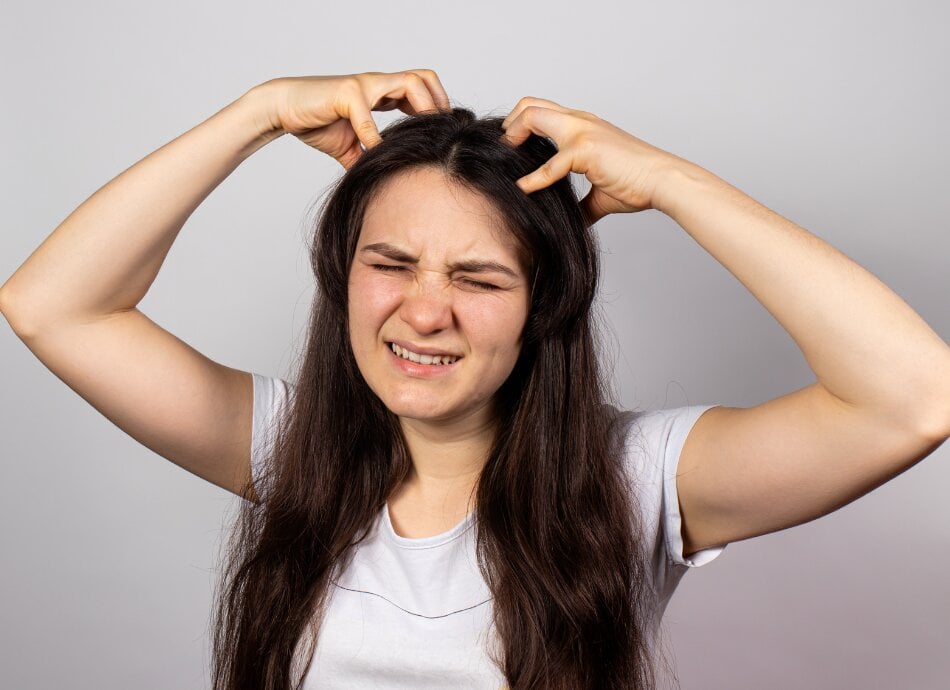Scalp ringworm
Also called tinea capitis
Key points about scalp ringworm
- Scalp ringworm is an infection on the scalp caused by a fungus (not a worm).
- It involves both the skin and hair and can cause dry scaly areas, redness, itch and hair loss.
- Treatments can stop the fungus from spreading and clear it up.

Ringworm of the scalp is caused by a fungus which grows downwards into the hair follicle and the hair shaft. It penetrates the hair cuticle and usually invades the hair shaft.
Ringworm of the scalp is most common in toddlers and school-age children and people with a weakened immune system.
Ringworm of the scalp is a contagious infection and can spread from one person to another by skin-to-skin contact, especially in warm, damp environments. It can also spread with the sharing of personal items such as hats, helmets, hairbrushes, towels and bedding. Read more about ringworm.

Image credit: DermNet NZ
Ringworm on the scalp may start as a small sore that looks like a pimple before becoming patchy, flaky, or scaly. These flakes may look like dandruff. It can make some hair fall out or break into stubble, leaving a bald spot. It also can make the scalp swollen, tender, and red.
Antifungal treatment
You must see your doctor if you have symptoms of scalp ringworm because treatment requires antifungal medication taken by mouth (tablets, capsules or liquid) and available on prescription. Examples include terbinafine, itraconazole and fluconazole. You may need to take the antifungal medicine for 6 weeks or more, until hair regrows. With treatment, the bald spots will usually grow hair again and the skin will heal without scarring.
Antifungal creams do not work because the cream cannot penetrate the root of the hair follicle, where the fungus is.
Medicated shampoo
Your doctor might recommend that you use a medicated shampoo, such as povidone iodine and selenium sulfide. The shampoo removes fungus spores and helps stop the infection spreading to other parts of your body or to other people.
Good hygiene
Good habits can help clear up scalp ringworm and prevent you getting it again.
- Do not share personal items such as hairbrushes, hats, helmets and pillows. These should be properly cleaned with hot water.
- Clean combs and brushes using a disinfectant such as a diluted bleach solution (1 part bleach to 10 parts water).
- Wash all bedding and towels on a hot cycle and put in the dryer using the hottest heat recommended on the care label until completely dry (times may vary depending on materials).
- Steam clean furniture that is frequently in direct contact with affected individuals.
- Some household members may carry the fungal spores but not have any symptoms. It is recommended that household/whare members use an antifungal shampoo for 2–4 weeks to help clear up the spores.
- Tinea capitis(external link) DermNet NZ, 2020
- Tinea capitis(external link) Montreal Children's Hospital, US, 2021
Apps
Credits: Healthify editorial team. Healthify is brought to you by Health Navigator Charitable Trust.
Page last updated:





